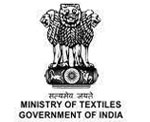Shawls
Shawls have been essential part of India's cultural heritage. Pashmina shawls are very famous the world over and command high premium.
For centuries, the shawl, an immaculately handwoven wrap around piece of fabric for shoulders and neck has been a personal style statement for every occasion in India. While in the olden days the mysterious shawls were a symbol of a family's status, today, in the era of individualism, fashion and lifestyle, they are more accessible to the masses.
The shawl has been evolving in terms of designs, colours and fabrics with the changing times. Designers and weavers keep on reinventing this graceful and functional fashion accessory to suit the contemporary consumer taste and lifestyle. Today, everything in a shawl has been redefined from fibres and weaves; colours and designs to size and draping styles. Yet, shawl continues to retain its classical ethos. Traditional shawls are usually embroidered around their periphery on all four sides, with heavier embroidery on two narrower sides. It is a finely handwoven pure wool fabric with tassels on the sides in their classical version. Classic shawls are usually made in neutral colours like beige, camel, off white, black and grey so that they can be worn over any colour of saree or outfit.
Amongst specific varieties, Kullu shawls in Merino wool from Himachal Pradesh are globally renowned for their geometric patterns and intricate designs, which include floral pattern, booties, psychedelic helixes and figures.
These shawls are delicately woven in dark, medium and light colours.
Real Kashmiri Pashmina and Shahtoosh shawls are unbelievably light in weight but very warm. Production of Shahtoosh shawls is now banned in India. Pashmina, the shawl with high international demand is also popularly known as 'ring shawl' since it is so fine that it can be passed through a man's signet ring. The superb Kashmiri shawls made in wool, silk and their blends incorporate true works of arts and crafts making them some of the finest pieces of Indian handloom textiles. Kashmiri shawls' origin and designs date back to pre-Mughal period. Pashmina Shawls are the prized possession of handloom weavers of the State
Amritsar and Ludhiana in Punjab are key producers of high quality woollen and wool-blended handwoven shawls. These vertically integrated centres produce a wide range of contemporary designs and a more commercial and affordable versions of the original masterpieces. Shawls from these centers are hand embroidered, machine embroidered or printed.
Each one of the North-Eastern States of India-Assam, Manipur, Meghalaya, Nagaland, Tripura, Mizoram, Arunachal Pradesh have their individual tradition of hand-weaving shawls and drapes in Eri, Tasar and Muga silk. These shawls usually have rustic designs, herringbone weaves and woven stripes with high textures. They have a variety of exotic natural colours in shades of grey, beige, brown and gold depending on the colours of cocoons they are made from.



